#Atlantic White Shark Conservancy
Explore tagged Tumblr posts
Text
me: is stressed about money and inconsistent income
also me: immediately wants to buy white shark merch as soon as I see the Atlantic White Shark Conservancy webpage
#dar stuff#atlantic white shark conservancy my beloved#take a second to check them out if you can!#they're doing really awesome work
6 notes
·
View notes
Text


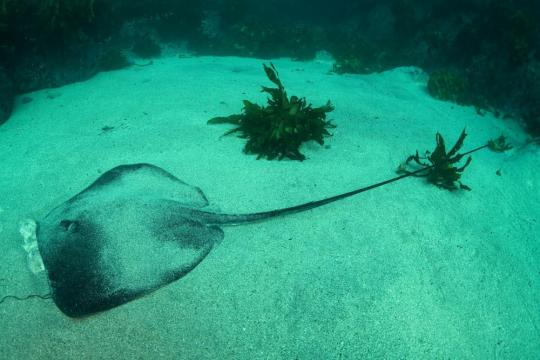
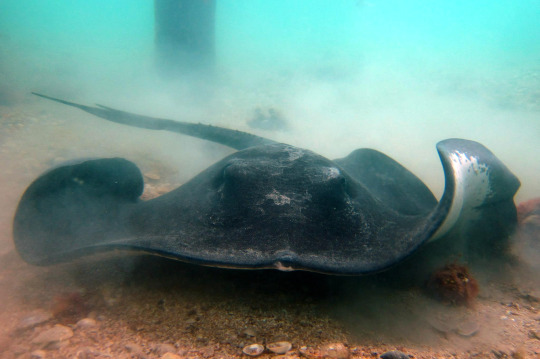
A Stingray Abroad: The Broad Stingray
Bathytoshia lata is a stingray known by many names: the broad stingray, the brown stingray, and thorn tail stingray; Dasyatis lata, Dasyatis thetidis, and Dasyatis ushii. The species has accumulated all these names-- and quite a few others-- thanks to its broad distribution. It can be found in the Atlantic, Pacific, and Indian Oceans, as well as the Mediterranean sea. Typically the species stays on reefs or in coastal bays with muddy bottoms. Prior to 2012, genetic testing of stingray species revealed them to be populations of B. lata, hence the multitude of latin names.
The broad stingray is one of the largest species of stingrays; the average individual is about 1.5 m (5 ft) across and 56 kg (123 lb), with some populations reaching an excess of 2.6 m (8.5 ft) across and 290 kg (639 lbs). Females also tend to be larger than males. The body is diamond shaped, and the tail is often more than twice its length. B. lata is dark in color, often tan or black, with a white underbelly. Perhaps its most distinctive feature are the 'spines'-- also known as dermal denticles-- that line the tail and rear portion of the body, giving it the name 'thorn tail'.
The brown stingray is fairly docile, and spends most of the day lying inactive on the sea bed. At night they forage for crustaceans, polychaete worms, and small fish. They can use their powerful pectoral fins to burrow through the sand and uncover prey, and like sharks they have special organs called ampullae of Lorenzini that allow them to detect electrical fields emitted by their prey. The primary predator of B. lata is the hammerhead shark, and when threatened individuals will raise the spines along their tail to deliver whip-like blows.
Females become ready to mate in the summer, typically from November to March. Males are attracted to pheromones released by the female, and initiate a dance-like courtship ritual. If the female is receptive, he will bite down on her pectoral fins while grasping her with special claspers located at the base of the tail. Following the mating ritual, the female gestates her young internally for 10-12 months. This species is ovoviviparous, and the pups recieve nutirents from both a yolk and internally secreted milk. Following her pregnancy, the mother gives birth to live young, typically 3-4 in a litter. The pups are completely independent, and receive no parental care after being born. It takes them about 14-16 years to become fully mature, and individuals can live up to 28 years in the wild.
Conservation status: The broad stingray is considered Vulnerable by the IUCN. Its most common threat comes from being caught as by-catch in fishing nets, and intentionally for their meat and skin.
If you like what I do, consider leaving a tip or buying me a kofi!
Photos
Andy Murch
Sarah Speight
Andrew Green
Phillipe Guillaume
#broad stingray#black stingray#Myliobatiformes#Dasyatidae#whiptail stingrays#stingrays#rays#cartilaginous fish#fish#marine fauna#marine fish#coral reefs#coral reef fish#benthic fauna#benthic fish#coasts#coastal fish#Atlantic Ocean#Indian Ocean#Pacific Ocean#Mediterranean sea#animal facts#biology#zoology#ecology
97 notes
·
View notes
Text
Animal of the Day!
Almaco Jack (Seriola rivoliana)
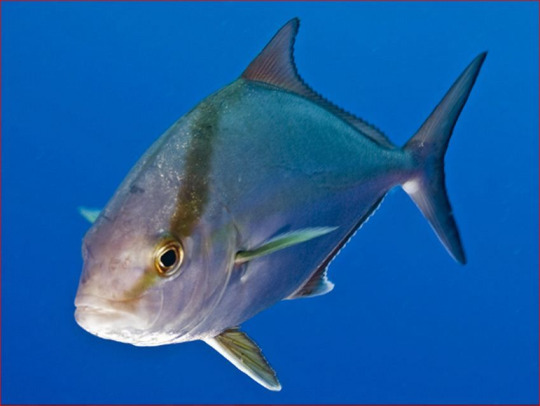
(Photo in public domain)
Conservation Status- Least Concern
Habitat- Atlantic Ocean; Indo-Pacific Ocean
Size (Weight/Length)- 35 kg; 90 cm
Diet- Shrimp; Squid; Small fish
Cool Facts- The almaco jack is a beast of the ocean. Capable of swimming an impressive 17 kilometers per hour, these fish value speed and stamina over everything else. Almaco jacks travel in massive schools in coastal areas, targeting groups of sardines and European squid. They force their prey into a tight ball and then strike as a single unit to scoop up mouthfuls of food. Almaco jack are essentially fearless and seek out large sharks, ranging from tiger sharks to great whites. Using the shark as a giant luffa, almaco jacks rub against the shark’s rough skin to remove any parasites or dead skin. Not wanting to pass up an opportunity, these fish will sometimes rub against scuba divers as a quick spa day.
Rating- 12/10 (I too wish I had a shark buddy.)
Requested by @almacojack-like-the-fish
#animal of the day#animals#fish#marine creature#thursday#july 6#almaco jack#jackfish#biology#science#conservation#the more you know
97 notes
·
View notes
Text
Great White Shark
Name: Great White Shark
Scientific Name: Carcharodon carcharias
Family: Lamnidae
Size: 16-20 feet long, weighs 2-4 tons
Habitat: Coastal or pelagic waters in the North Atlantic, Mexico, South Africa, Australia, and Northeast Pacific
Fatalities: 5 fatal attacks last year
Conservation Status: Vulnerable
Fun Fact: Great Whites are the largest predatory fish
Just when you thought it was safe to go back into the water.
The influence for Hungry Shark games, Jaws, and much more, the Great White Shark is either known to most people as terrifying or misunderstood. Terrifying, for its reputation of attacking surfers, misunderstood, because the likelihood of dying by shark attack or even getting attacked is lower than getting struck by lightning. This isn’t your usual dailydoseofdeadly post with venom, teeth, and what do if you get bit. If you get bit, you should go to the emergency room, it’s not that hard. This post is going to be an education on sharks, their declining numbers, and conservation strategies put into place. I’m all for hemotoxins and bite force, but in a decade, if we don’t start putting conservation into the conversation, there’ll be nothing there for me to talk about.
Overfishing puts over ⅓ of all sharks at risk of extinction. Overfishing is when fish are caught and removed at a faster rate than they can reproduce. But daily, sharks aren’t a typical fish that is caught for consumption. BUT, they do eat fish; fish that’s being removed from the food chain at remarkable rates. Sharks, usually, at the top of ocean food chains and food webs. Removal of anything lower, even the smallest of fish, could affect everything from the tiniest plankton to the biggest sharks and whales. Basically, the sharks don’t have anything to eat, and starvation kills.
Sharks, particularly more open-water ones like the Great White and Mako shark, are hunted for sport and oftentimes kept as trophies. Removing top predators like these can completely turn ecosystems upside down, throwing populations of prey fish and plankton off.
That’s not to say that there are things being done and things that YOU can do too. YOU can buy seafood sustainability. YOU can call your representatives if you live in the United States and advocate for marine protection programs. YOU can be mindful of the fertilizers you put in your yard so toxic chemicals don’t get into waterways and eventually to the ocean. YOU can donate and volunteer with local environmental organizations. YOU can make a change, no matter how landlocked you are, no matter how little a difference it makes, it’s still something.
Image from Smithsonian Institution
#marine biology#omg#omgpage#deadly#nature#animals#dailydoseofdeadly#dangerous#snake#marine#great white shark#conservation#ecology#endangered species#ecosystem#environment#biology
3 notes
·
View notes
Text
[Image IDs: Image #1: Text reading: "As far as we know, the Long Island shark nursery is where all baby [great white] sharks in the North Atlantic spend their first year of life," says Megan Winton, a research scientist with the Atlantic White Shark Conservancy, a nonprofit based in Massachusetts.
Image #2: Text reading: Through the camera tag's minute-by-minute record of Liberty's activities, the researches found further proof of the nursery's importance as a sheltering habitat. Ten hours of footage revealed the young animal's habits, such as diving for squid up to 150 feet deep, the moving closer to shore to feast on huge schools of bunker fish, also known as menhaden.
Her movements also confirmed the researchers' theory that baby sharks, not yet able to regulate their body temperature, prefer warmer temperatures, staying in the range of 70 degrees Farenheit as much as possible.
This warm environment is also free of many large predators yet rich in prey, particularly fish and squid that flock to the many shipwrecks scattered around Long Island. /End IDs]
31K notes
·
View notes
Text
Shark sightings in Cape Cod Sandwich
Shark sightings off Cape Cod, including near Sandwich, have been increasing, particularly during summer months. Recent reports indicate that great white sharks have been spotted as close as 50 feet to shore in some areas around Cape Cod. The Sharktivity app, managed by the Atlantic White Shark Conservancy, tracks shark activity and provides real-time data on sightings. These reports are…
#beach at Plymouth#sandwich cape code#Sandwich Inn & Suites Directions#Sandwich Inn and Suites#Shark sightings in Cape Cod Sandwich
1 note
·
View note
Text

Shark Hats for the Summer of 2024!
LeeBeth, a 14-foot shark, made history this February off the coast of Mexico, just south of the Texas border, the furthest west that one of the animals, often referred to as great whites, with a tracking tag has ever been detected.
By Tuesday, LeeBeth was back off Massachusetts, according to the Atlantic White Shark Conservancy. She's the first tagged shark to show up on the nonprofit's popular shark-tracking app, Sharktivity, this summer.
1 note
·
View note
Text

A young chimpanzee peeks through the leaves in Taï National Park, in Côte d’Ivoire 🇨🇮. Photograph By Michael Nichols

An aerial view of plains zebras (Equus quagga) walking in a flood plain in Okavango Delta, Botswana 🇧🇼. Photograph By Sergio Pitamitz
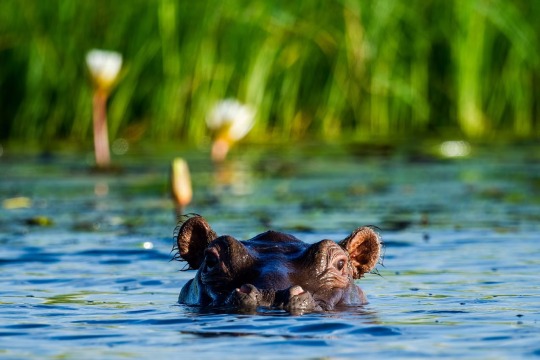
A Nile Hippopotamus surfaces at the edge of a reed bed, in Chobe National Park, Botswana 🇧🇼. Photograph By Jason Edwards
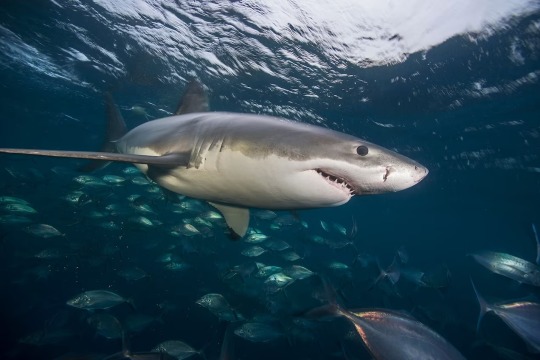
A great white shark swims in waters off the Neptune Islands, New York, United States 🇺🇸. Photograph By Brian J. Skerry
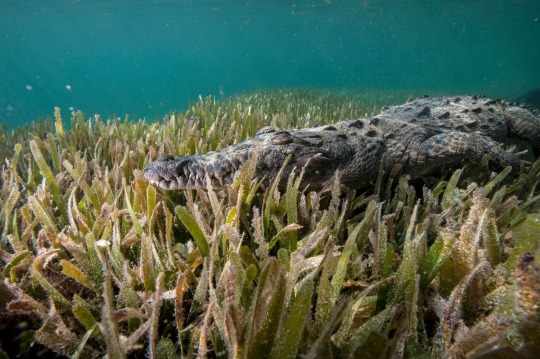
A submerged American crocodile (Crocodiles acutus) lives in the dense mangroves within Cuba's Gardens of the Queen National Marine Park, Cuba 🇨🇺. Photograph By Jennifer Hayes

Atlantic spotted dolphins swim in the waters off Bimini in the Bahamas 🇧🇸. Photograph By Brian J. Skerry

White rhinoceroses (Diceros bicornis) in Kenya's Lewa Wildlife Conservancy, Kenya 🇰🇪. Photograph By Frans Lanting
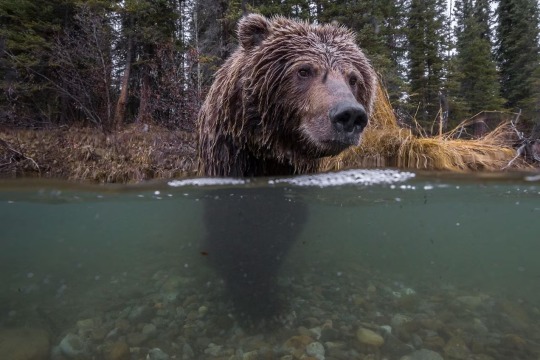
A grizzly bear fishes for salmon in the Fishing Branch River in Yukon Territory, Canada 🇨🇦. Photograph By Paul Nicklen

Portrait of a Victorian koala (Phascolarctos cinereus) in Australia 🇦🇺. Photograph By Doug Gimesy
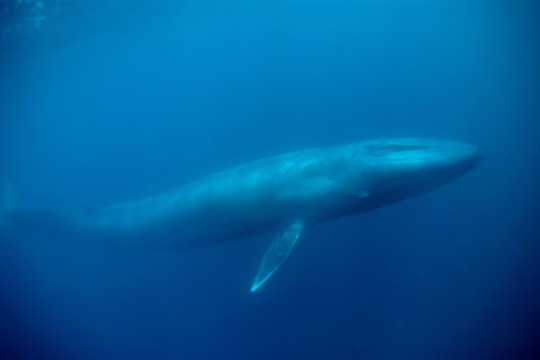
An endangered blue whale with unique color patterns and markings, off Costa Rica 🇨🇷. Photograph By Flip Nicklin
0 notes
Link
[ad_1] Approximately 800 great white sharks have visited Cape Cod waters from 2015 to 2018, researchers say. A population study was published Thursday in the journal Marine Ecology Progress Series.The team of scientists from the Atlantic White Shark Conservancy, the University of Massachusetts Dartmouth's School for Marine Science and Technology and the Massachusetts Division of Marine Fisheries conducted a mark-recapture survey to estimate the size of the newest white shark hotspot.The conservancy tweeted that it represents the "first estimate of white shark abundance ever produced in the North Atlantic Ocean."SHARKS MIGHT BE CONSUMING COCAINE AS AMERICA'S DRUG CRISIS SPILLS INTO THE SEA Research vessel looks for Great White Sharks, off the coast of Chatham, Massachusetts, on Oct. 21, 2022. (JOSEPH PREZIOSO/AFP via Getty Images)The number of white sharks was found to peak in the late summer and early fall when water temperatures were the warmest. Mark-recapture uses repeated surveys of uniquely marked animals to estimate population size – although sharks can also be identified based on unique markings and notches in their dorsal fins. Dr. Greg Skomal, shark researcher for Massachusetts Marine Fisheries, captures video footage of a great white shark while the crew listens for its radio tag off the coast of Chatham, Massachusetts, on Oct. 21, 2022. (JOSEPH PREZIOSO/AFP via Getty Images)From over 2,800 videos compiled during 137 survey trips over the summer and fall of 2015-2018, the scientists identified 393 individual white sharks included in its model."By comparing the number of previously identified individuals to new individuals encountered over time, we were able to estimate the number of sharks visiting the site in each month of the survey, as well as the total for the four-year period," Megan Winton, lead author of the study and a staff scientist for the Atlantic White Shark Conservancy, explained to The Boston Herald. An Atlantic White Shark Conservancy research vessel looks for great white sharks off the coast of Chatham, Massachusetts, on Oct. 21, 2022. (JOSEPH PREZIOSO/AFP via Getty Images)CAPE COD SHARK ACTIVITY CLOSES BEACH TO SWIMMINGWinton first revealed this population estimate last month during a new National Geographic special. On board a boat, Izzy Lutz, an intern with the Atlantic White Shark Conservancy, checks on one of the receivers in Chatham harbor that helps track sharks on Cape Cod, Massachusetts. (David L. Ryan/The Boston Globe via Getty Images)"Their movements are very dynamic, they trickle in and out," Greg Skomal, who leads the Massachusetts Division of Marine Fisheries' Shark Research Program, told the outlet. "Some white sharks simply stop by on their way north while others spend more time along the Cape, likely because they have success feeding on seals."He noted that it is important for the public to understand there are not hundreds of sharks swimming off Cape Cod beaches all at the same time. Dr. Greg Skomal, shark researcher for Massachusetts Marine Fisheries, re-attaches a tag after a failed attempt at tagging a Great White Shark off of Chatham, Massachusetts, on Oct. 21, 2022. (JOSEPH PREZIOSO/AFP via Getty Images)The study concluded that the need for a consistent means of assessing white shark population size still stands and said the team hoped its model could be a step towards that goal as shark populations in several regions are seemingly recovering due to protection. Megan Winton, 38, research scientist for the Atlantic White Shark Conservancy, watches as a great white shark swims next to the boat off the coast of Chatham, Massachusetts, on Oct. 21, 2022. (Photo by JOSEPH PREZIOSO/AFP via Getty Images) CLICK HERE TO GET THE FOX NEWS APP "As recovering populations return to regions where they have long been rare or absent, increased interactions between sharks and humans can create conflict and undermine public support of conservation policies. Although the overall risk posed to recreational water users remains low even at aggregation sites, the sensational media coverage that typically accompanies white shark sightings and attacks on humans generates fear and can skew perceptions of risk," the scientists warned, stating that a lack of quantitative population information can heighten this sense of risk by raising doubt about the scientific basis for management decisions and eroding public trust. "Therefore, we view reliable abundance estimates as not only critical for management but also for navigating the complex societal conflicts that will arise when and where white shark populations recover, which will likely present the next major conservation challenge for this iconic species," the study authors concluded. Julia Musto is a reporter for Fox News and Fox Business Digital. [ad_2]
0 notes
Text
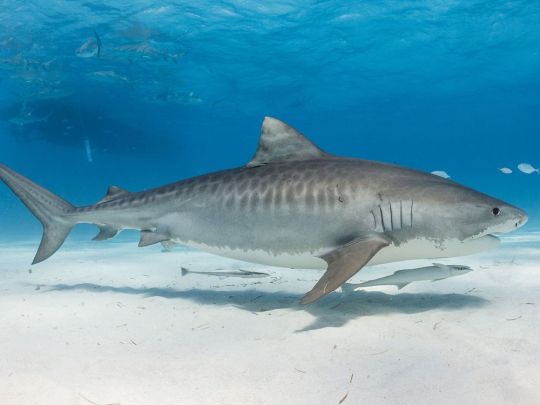

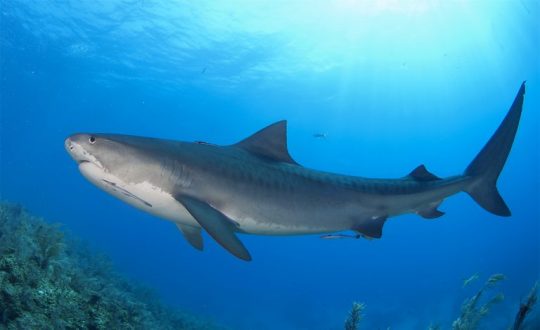
Taming the Tiger Shark
The tiger shark (Galeocerdo cuvier) is a common sight for divers, fishermen, and tourists in the tropical waters of the Atlantic and Pacific oceans. They are often found around sea grass fields or coral reefs, and tend to prefer warm, shallower waters near the coastline or surrounding atolls and islands. The northern end of their range extends up to the northern borders of the United States and China, while their southern range reaches down to Brazil, Madagascar, and the eastern coast of Australia.
While they're slightly smaller than great whites, G. cuvier is still one of the largest carnivores in the ocean. Adults can grow up to 4.7 m (15 ft 5 in) long and weigh between 300 and 900 kg (700 and 2,000 lb). Females tend to be larger than males, but the two sexes are otherwise indistinguishable. Individuals are typically bluish gray or green, with a white or light yellow underbelly; this provides them with camouflage, as fish swimming overhead or below are unable to pick out the shark's silhouette against the dark or light background, respectively.
As an apex predator, G. cuvier has few predators of its own. Juvenile tiger sharks will often fall prey to other sharks, including adults of their own species. Orcas are also occasionally known to prey on tiger sharks, but these occurrences are rare. In their own food chain, G. cuvier has a large appetite and will eat almost anything. Coral reef fish are a common target, though their speed and small size makes them harder to catch. More often tiger sharks will prey on cephalopods, crustaceans, sea snakes, turtles, sea birds, and a host of marine mammals like dolphins, dugongs, sea lions, and young, injured, or dead whales. Inadvertently, tiger sharks will also consume garbage such as bottles tires, earning them the nickname 'The Garbage Can of the Ocean'.
Tiger sharks are primarily active at night. Contrary to other sharks, G. cuvier has excellent eyesight, as well as a keen sense of smell. In addition, tiger sharks have two special sensory organs. The lateral line extends down the length of the body and can detect minute vibrations in the water. Ampullae of Lorenzini are small electroreceptors located on the snout; these detect the weak electrical impulses generated by prey. All these features make it easy for tiger sharks to find a meal, and once located their body shape allows them to put on a burst of speed and make quick turns to catch their target. Most of the time, this hunting practice is done alone, but occasionally groups of tiger sharks will gather to scavenge a large carcass or for the mating season.
Male tiger sharks mate every year, while females only reproduce every three years. Breeding seasons differ based on location; in the Northern Hemisphere mating occurs between March and May, while in the Southern Hemisphere it's between November and January. During this time, dozens or even hundreds of sharks may gather to find mates. Females carry their young for up to 16 months, at which time they give live birth. Tiger sharks are ovoviviparous, meaning that eggs are fertilised and hatch inside the mother; this species is also unique in that they employ a technique called embryotrophy, in which young gestate in sacks which are filled with an embryonic fluid. A single litter of tiger sharks may contain between 10 to 80 pups, and each one may live up to 12 years in the wild.
Conservation status: The IUCN has classified the tiger shark as Near Threatened. While exact numbers are unclear, a great many tiger sharks are killed each year for their skin, fins, and liver. This species also has a reputation for vicious attacks, and while they can be aggressive when threatened, only a handful of shark attacks occur each year.
If you like what I do, consider leaving a tip or buying me a ko-fi!
Photos
Neil Hammerschlag
Brian Skerry
David Snyder
#tiger shark#Carcharhiniformes#Galeocerdonidae#ground sharks#sharks#cartilaginous fish#fish#marine fauna#marine fish#coral reefs#coral reef fish#coasts#coastal fish#atlantic ocean#Pacific Ocean#indian ocean#indo pacific#animal facts#biology#zoology
98 notes
·
View notes
Text
Jekyll and Simon: Two great white sharks tracked to Gulf of St. Lawrence
Two great whites have made their way to Quebec waters just in time for shark week.
A specimen named Jekyll was last pinged on Tuesday near the shores of Percé, on the tip of Quebec's Gaspé Peninsula.
Meanwhile, Simon is also hanging out in the Gulf of St. Lawrence a little further inward.
Their voyages are being tracked by Ocearch, an American nonprofit that monitors the movements of Earth's ocean giants.
The organization has tagged hundreds of animals, including turtles, whales, dolphins and, of course, sharks.
Jekyll and Simon are still in their juvenile years, but you might not guess it by looking at them. Jekyll is eight feet eight inches tall and 395 pounds, while Simon is even bigger at nine feet six inches tall and 434 pounds.
The pair were named after Jekyll and St. Simon's Islands, both in Georgia, where researchers first tagged them in December 2022.
Ocearch's map shows the young sharks travelling northward, cruising past the sights of Myrtle Beach, Atlantic City and Long Island before hitting Canadian waters around June of 2023.
After a brief detour around Nova Scotia, they took the Cabot Straight up to the Gulf of St. Lawrence.
It's not the first time great whites have been spotted in Quebec; in 2019, a shark named Brunswick made headlines after he turned up near the Magdalen Islands, and four more sharks followed suit in 2020.
White sharks Simon and Jekyll are in the Gulf of St. Lawrence! We studied both of these juvenile sharks in Dec. 2022 and this is the first time we've been able to track their movements north. Track Simon and Jekyll: https://t.co/qBHEhbMg6x#Sharks #WhiteShark #GulfofStLawrence pic.twitter.com/v0USKtyeFT
— OCEARCH (@OCEARCH) July 15, 2023
CONSERVATION EFFORTS
Fred Whoriskey, executive director of The Ocean Tracking Network, a global aquatic research, data management and partnership platform at Halifax's Dalhousie University, said recent conservation efforts explain how the two large fish ended up near Quebec.
"What's happening, we think, now is the population is growing, the animals that had pulled back to a southern distribution — mostly south of the Canadian border — are now beginning to occupy Canadian waters. We're beginning to see them much more frequently," he said in an interview.
Whoriskey said other measures have protected the sharks from dying off in cases of accidental kills when they get snagged in halibut or swordfish lines, for example.
"Now, we're protecting them from that kind of thing and they do seem to be bouncing back," he said.
Going for a dip in the St. Lawrence? Whoriskey offers these tips for what to do when encountering a shark:
Don't panic — don't begin to flail or show other signs of panic that might excite attention
Move backward — move toward a shallower end of the water, and hopefully out of the water
Keep an eye on it — don't lose sight of the shark so that it can see that you're watching it
"They are very cautious in what they're doing when they're attacking because they also can get hurt in this process," he said.
from CTV News - Atlantic https://ift.tt/rSQTM83
0 notes
Text
https://www.irishtimes.com/life-and-style/a-deeper-look-at-our-mysterious-neighbour-the-shark-1.4455512
A deeper look at our mysterious neighbour the shark
In Ireland we are becoming more accustomed to sharks, with an increase in sightings of basking sharks along the west coast
“We need to get to know sharks better,” says artist Dorothy Cross. “There are 35 different types swimming in Irish waters, and yet we’re largely oblivious. These beautiful, svelte creatures have been on this planet for over 400 million years, and are so perfectly formed that they have remained largely unchanged for the last 100 million years.”
Her introduction to the world of sharks was a typical one of fear – while living in California and reading of attacks by great whites in San Francisco Bay. But once she learned to scuba dive it quickly turned to fascination.
"The first dive I ever made was with hammerheads in the Galápagos, and it was an extraordinary experience: realising I was in their territory and seeing how calmly they observed me, these exquisite, amazing creatures."
Winter Nights
Since then she has dived with different types of shark all around the world, and spent time with shark-callers on the island of New Ireland off Papua New Guinea, where local men ritualistically sing to lure sharks up from the deep, believing their ancestors guide the shark to be caught to feed the community.
READ MORE
“The shark-caller sleeps in isolation and abstains from many things before heading out alone on a small dugout canoe to fish. When he catches a shark he sounds a conch, and the villagers rush to the shore to share the animal,” says Cross. “The caller gets the liver and the fins, and everyone cooks the meat together on hot stones in pits.”
Closer to home we are all gradually becoming more accustomed to sharks, with the increased sightings of basking sharks along the west coast, and even a confirmed report of a smooth hammerhead shark 160km southwest of Ireland on the continental shelf edge last year.
This was the first time the species has been seen in Irish waters, and with its classic hammer-shaped head and tall, slender dorsal fin it's unlike anything encountered here before. This discovery followed closely on the announcement by the Irish Marine Institute of a deep-water nursery of blackmouth catsharks 300km west of Ireland, which they spotted while surveying with a remotely operated vehicle.
Scientists believe that up to 10 new species of shark may become common in Irish waters as sea temperatures rise in coming decades, including blacktips, sand tigers and longfin makos. The hammerheads too will be more frequent – these placid monsters that have never killed a human and give birth to live young in the shallow sandy waters near the Caribbean and West Africa. Many of these species are facing increasing threat from over-fishing, plastic waste and climate change. Some are facing outright extinction.
The hammerhead is listed as “vulnerable” on the International Union for Conservation of Nature (IUCN) Red List of Threatened Species, and is being increasingly targeted for the shark fin trade. The porbeagle and angel shark found in Irish waters are both on the “critically endangered” list, while the leafscale gulper shark and basking shark are classified as “endangered”.
Symbiotic
Cross’s lingering memory of her time in New Ireland in 2006 was how the silky, mako and oceanic white tip sharks were becoming worryingly scarce due to increased fishing by Malaysians and Chinese, who harvest their fins for traditional cures and shark fin soup.
“The ancient way of life for the New Irelanders is coming to an end,” says Cross. “What was a balanced life, symbiotic with what nature provided, is becoming extinct.”
The fact that shark fishing is becoming an increasingly popular tourism activity in Ireland is particularly upsetting for Cross. It's a key feature offered all along the Wild Atlantic Way from Cork to Donegal.
“I wish these people realised how important sharks are for the biology of the ocean,” says Cross. “They are top of the food chain and so everything beneath relies on them. They are vital to ensuring ecological balance, yet they are under such threat from anglers.”
Dorothy Cross holding shark. Photograph: Sue Flood
Ireland is not currently involved in shark finning, but we do catch a significant amount of sharks for sport – it is “catch and release” and the fish are tagged as part of a marine programme overseen by the Irish Central Fisheries Board.
Yet many sharks still end up with barbed hooks corroding in their bodies, and long lines of broken tackle trailing from their mouths.
Deep-sea angling enterprises along the west coast of Ireland claim to have landed more than two dozen blue sharks in one day with average catches in double figures. During the season almost every shark fishing trip is successful, but luring and landing a blue shark that can weigh up to 65kg or a porbeagle that can reach 100kg without doing harm is very difficult.
“What pleasure could anyone get from traumatising an animal for hours on the end of a hook that is probably lodged in their stomach?” asks Cross.
Their release is of no real solace to her, as her brother, zoologist Prof Tom Cross, suggests that if the sharks are “played” too long on the line their muscles build up an excess of lactic acid that can prove fatal, or they can bleed to death after release.
That said, sharks that have been caught and tagged in Irish waters have been recaught as far away as the Cape Verde Islands, but the impetus is to bring them aboard and tag and release them as quickly as possible.
Shark’s heart
As an artist Cross has done more than most to highlight the plight of sharks in works like Relic (2009), which consists of the skin of a porbeagle shark she bought from a fishmonger in the English Market in Cork that was then lined with 14 carat gold, or Shark Heart Submarine (2011), which has a preserved shark’s heart encased in a model of a nuclear submarine and is now in the permanent collection of the National Gallery of Ireland.
"I've used blue sharks, basking sharks and porbeagles in the work. All were washed up dead on the coastline or caught by fishermen when shark was still allowed to be sold to eat in Ireland. Gladly that is no longer the case. When I went to Trinity College to meet the queen of England I had the skin of a basking shark defrosting on the back seat of my car."
Cross acknowledges that some of her art could be regarded as pro-shark polemic, although works such as Basking Shark Currach (2013), which consists of the skin of a basking shark hand-stitched on to the skeleton of a small currach, or Everest Shark (2013) are important pieces in their own right.
It gave her particular pleasure to have the artwork Relic, featuring the gold-lined porbeagle, displayed in the Bloomberg SPACE in London, a centre of international currency speculation. "The currency traders would have recognised the value of the gold, but probably not that of the poor shark."
The work Relic, a porbeagle shark lined with gold leaf
It is regrettable that Hollywood has commodified the shark; making it a crass motif to signal fear and threat. “They now epitomise the human fear of our own mortality,” says Cross. “We are all going to die, but unlikely from an accidental shark attack.”
She acknowledges that sharks, in rare circumstances, can be dangerous, but attacks occur largely through misidentification. “We appear from below like their food – like seals and small fish. Their preferred food is blubbery and soft. Our bony bodies are not palatable.”
Her desire is to see Irish people becoming guardians of our sharks, as we are for dolphins and whales.
“We need to start appreciating the mystery of them; the fact that scientists had no proof that they sleep until recently, or that no human has ever seen a great white mating.”
The fact that they disturb us is valuable, she believes – “it’s good for us to be shaken out of our complacency”.
“I like that both art and sharks are elusive and disturbing, navigating between the seen and unseen. They are both revelatory and essential.”
0 notes
Text
Is Fishing on the Norfolk Broads a Good Catch?
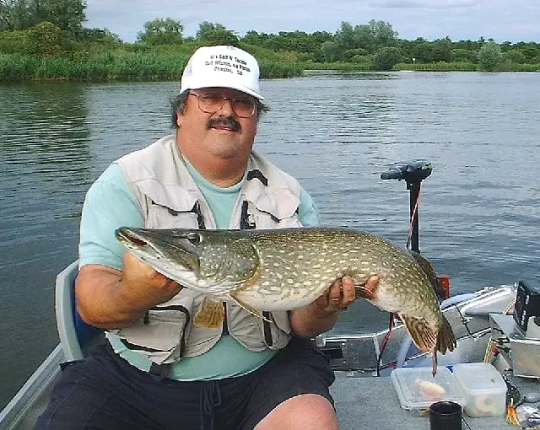
For all the avid anglers out there looking for a perfect fishing getaway, look no further than Norfolk on the East Coast of England. With its vast stretches of coastline, abundance of rivers and lakes, and varied marine life, Norfolk is a haven for fishing enthusiasts. Whether you are a beginner or an experienced angler, Norfolk has a lot to offer for a fulfilling and rejuvenating fishing holiday. In this article, we will explore why Norfolk is the ultimate destination for fishing holidays and what you can expect during your stay.
Abundant Marine Life
Norfolk's coastline stretches for over 90 miles and is home to a diverse range of fish species such as bass, flatfish, mackerel, and cod. There are several fishing charters available that can take you on exciting deep-sea fishing trips where you can reel in big catches like skate, conger eels, and even sharks. Additionally, the Norfolk Broads, a vast network of rivers and lakes, are filled with pike, bream, roach, and tench. You can hire a boat or fish from the bank and catch some of the delicious freshwater fish that Norfolk has to offer.

The North Norfolk Fish Co, Old Stable Yard, Holt. Photo by Kolfoln. Wikimedia. The Location Norfolk's coastline is blessed with a wide range of habitats, each with its distinct marine life. From sandy beaches to rocky cliff ledges, each habitat supports a diverse range of marine life that varies depending on the tides and weather conditions. Some of the most well-known British creatures can be found in Norfolk's waters. Particularly popular are the Atlantic grey seals, the common dolphins, and the harbor porpoises. These animals can often be seen playing and swimming off the coast, and if you're lucky, you might even be able to spot them from the shore.
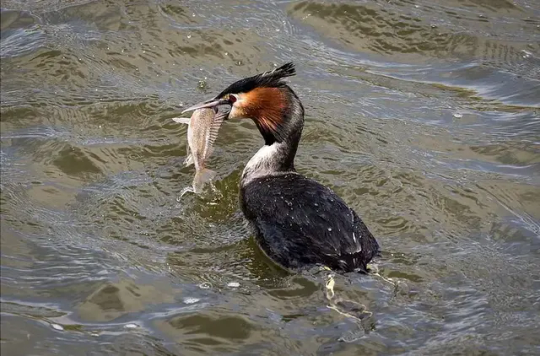
Great Crested Grebe fishing. Photo by Smudge 9000. Flickr. Natural Surroundings Norfolk's coastline is not only home to mammals but also features a plethora of fish species. The coastline boasts of having over 14 types of fish species. The coastline is home to some of the UK's most sought-after fish species, such as cod, whiting, plaice, bass, and mackerel, making it an ideal place to fish for sport or to indulge in a spot of sea-to-fork dining. Norfolk also plays host to many seabird species, such as the puffin, guillemot, and razorbills. Norfolk's waters aren't just famous for their marine mammals, fish, and seabirds. But, the coastline is also home to some of the UK's most breathtakingly expansive mussel beds, oyster beds, and salt marshes. These protect rich habitats that are essential to local ecology and provide vital food sources for the abundant marine life off the coast. Mussel and oyster fishing are traditional industries that are still widespread along the coast. Being able to visit the shellfish industry and try these local delicacies is a must-do experience.

Coastal defence at Titchwell, Norfolk. Photo by Andy Peacock. Geograph. Nature Reserves The North Norfolk coast is home to a variety of nature reserves that are crucial to the survival of many marine creatures in the area. The Cromer Shoals Chalk Reef, situated just over a mile off the coast, is one fantastic example of a designated marine conservation zone. This site stretches over 20 miles and provides a habitat for over 300 species of fish and other marine life. Other popular reserves include Titchwell Marsh, Cley Marshes, and Blakeney Point, which is home to the largest seal colony in England.
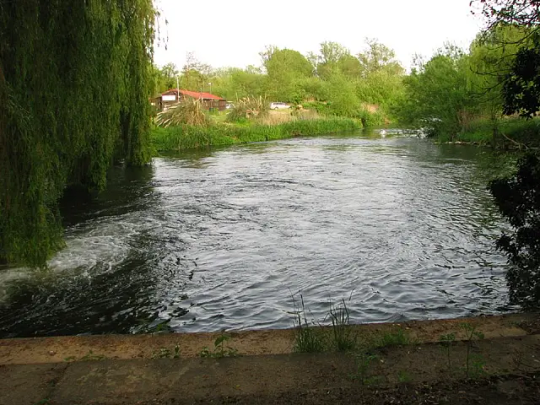
Mill pool at Taverham Mill Fishery. Photo by Evelyn Simak. Wikimedia.
Scenic Locations
One of the top activities that both parents and children can get involved in is fishing. Norfolk has plenty of family-friendly fishing locations, including Taverham Mill Fishery and Pleasurewood Hills Family Theme Park. At Taverham Mill, you can enjoy a peaceful day by the lake with your family, where your kids can learn the art of fishing and catch some fish themselves. Pleasurewood Hills, on the other hand, offers a perfect combination of fishing and theme park rides. Whether you're an experienced angler or a beginner, fishing in Norfolk is a fun and educational experience for the whole family.

Gooderstone Water Gardens. Photo by Karen Roe. Flickr. Discover the Broads If you're looking for an outdoor activity outside of fishing, Norfolk's nature reserves are a must-visit. The Broads, the UK's largest protected wetland, is a unique landscape of water, broads, and marshes, offering a chance to see varied wildlife, birds, and plants. Your family can also take a boat trip and explore the tranquil waterways of the Broads, which stretch across 125 miles. Another nature reserve worth visiting is Blickling Estate, which is home to ancient woodland, rolling farmland, and a stunning Jacobean house. It has several walking trails that are perfect for families and lead to gardens, lakes, and temples.

Norwich Castle - and modern lift. Photo by Elliot Brown. Flickr. Cultural Days Out Apart from nature reserves, Norfolk has a rich history and is home to numerous castles and museums. Norwich Castle Museum & Art Gallery, for instance, is a gem for history buffs, housing archaeological treasures dating back to the Roman era. Children will enjoy exploring the castle's turret, which provides a panoramic view of the surrounding cityscape. Another historic landmark that you shouldn't miss is the 900-year-old Castle Rising, which is surrounded by a moat and has an interactive exhibition that tells the story of its history.

The Old Vicarage Gardens, East Ruston - East Ruston Church. Photo by John Salmon. Geograph. Amazing Gardens Lastly, Norfolk has several magnificent gardens that will take your breath away. One such garden is the East Ruston Old Vicarage Garden, a ten-acre garden with a mix of traditional and exotic plants. The garden is divided into different sections, each with its unique character, including a Mediterranean-style garden and a water garden. Your family can also enjoy a relaxing walk around Holkham Hall's Walled Garden, which boasts an array of vegetables, herbs, and fruit trees, plus a glasshouse filled with colourful flowers.
Varied Accommodation Options
Norfolk has a wide range of accommodation options that cater to all types of anglers. From cozy cottages to luxury lodges, there is something for everyone. Many accommodations offer fishing packages that include guided fishing tours, gear rental, and bait. You could also choose to stay near the coastline or inland, depending on your preference. With very comfortable accommodation available in Norfolk, you can rest after a long day of fishing and wake up to beautiful scenery.

The Garden Party, Norfolk & Norwich Festival. Photo by Sasastro. Flickr.
Festivals and Events
Norfolk is renowned for its annual fishing festivals and events that attract anglers from around the country. The Cromer Crab and Lobster Festival is a popular event that celebrates the coastal town's seafood traditions with cooking competitions, crabbing, and boat races. The Norfolk and Suffolk Fly Fishers Club also hosts regular events that feature fly-fishing competitions and workshops. Attending these events can be a great way to connect with other anglers and explore the region's fishing culture.
Fun-Filled Family Holidays
One of the top activities that both parents and children can get involved in is fishing. Norfolk has plenty of family-friendly fishing locations, including Taverham Mill Fishery and Pleasurewood Hills Family Theme Park. At Taverham Mill, you can enjoy a peaceful day by the lake with your family, where your kids can learn the art of fishing and catch some fish themselves. Pleasurewood Hills, on the other hand, offers a perfect combination of fishing and theme park rides. Whether you're an experienced angler or a beginner, fishing in Norfolk is a fun and educational experience for the whole family. If you're looking for an outdoor activity outside of fishing, Norfolk's nature reserves are a must-visit. The Broads, the UK's largest protected wetland, is a unique landscape of water, broads, and marshes, offering a chance to see varied wildlife, birds, and plants. Your family can also take a boat trip and explore the tranquil waterways of the Broads. The navigable waterways stretch across more than 125 miles. Another nature reserve worth visiting is Blickling Estate, which is home to ancient woodland, rolling farmland, and a stunning Jacobean house. It has several walking trails that are perfect for families and lead to gardens, lakes, and temples. Apart from nature reserves, Norfolk has a rich history and is home to numerous castles and museums. Norwich Castle Museum & Art Gallery, for instance, is a gem for history buffs, housing archaeological treasures dating back to the Roman era. Children will enjoy exploring the castle's turret, which provides a panoramic view of the surrounding cityscape. Another historic landmark that you shouldn't miss is the 900-year-old Castle Rising, which is surrounded by a moat and has an interactive exhibition that tells the story of its history. Lastly, Norfolk has several magnificent gardens that will take your breath away. One such garden is the East Ruston Old Vicarage Garden, a ten-acre garden with a mix of traditional and exotic plants. The garden is divided into different sections, each with its unique character, including a Mediterranean-style garden and a water garden. Your family can also enjoy a relaxing walk around Holkham Hall's Walled Garden, which boasts an array of vegetables, herbs, and fruit trees, plus a glasshouse filled with colorful flowers.
Conclusion
Norfolk is a stunning fishing destination for both experienced and novice anglers alike. With its abundant marine life, natural surroundings, and scenic locations, Norfolk is certainly on the anglers bucket list as an unforgettable fishing holiday. Whether you're after big catches in the deep sea or freshwater fish from the banks of rivers and lakes, there's no shortage of incredible spots to cast your line. And with so many nature reserves providing vital habitats for local species like seals and dolphins, you can be sure that your visit will help contribute towards protecting these amazing creatures too! Norfolk is a great destination for family holidays, offering something to suit all tastes. Whether you’re looking to go fishing, explore nature reserves, or learn about history and culture at the castles and museums, there are plenty of activities that both parents and children can enjoy. With comfortable accommodation available in Norfolk, it makes an ideal place to relax after a long day out exploring. From guided fishing tours with gear rental included to attending festivals and events celebrating the region's seafood traditions, there are lots of ways to make your holiday truly memorable. Sources: THX News, National Parks UK & Norfolk Broads. Read the full article
#Cromer#Fishing#GooderstoneWaterGardens#Norfolk#NorfolkBroads#NorfolkFestival#NorfolkFishing#NorwichCastle#SeaFishing#TheOldVicarageGardens
0 notes
Text
As an autistic person whose special interest is license plates I am ASHAMED to live in Massachusetts with our boring ass plate (I am partial to the specialty Atlantic White Shark Conservancy mass plate though)


245 notes
·
View notes
Text
CAPE COD SHARK SIGHTINGS
Cape Cod has been a popular tourist destination for decades, but in recent years, it has become known for something else: shark sightings. The Atlantic White Shark Conservancy’s Sharktivity app has been tracking the presence of white sharks off the coast of Massachusetts, and the numbers have been increasing. In 2022, there were 55 new individual Atlantic White Sharks tracked, and 63 returning…

View On WordPress
0 notes
Text
I need your opinions!!! I have to go back down to Cuba so Freya can see her family and for a really important ceremony between her father and me….should I aim to go back in late May, which is soon and would piss off my boss because I just came back OR in September, when it is hurricane season and which would mean I would miss out on volunteering with the Atlantic White Shark Conservancy’s expeditions this year. Help! Help!
2 notes
·
View notes